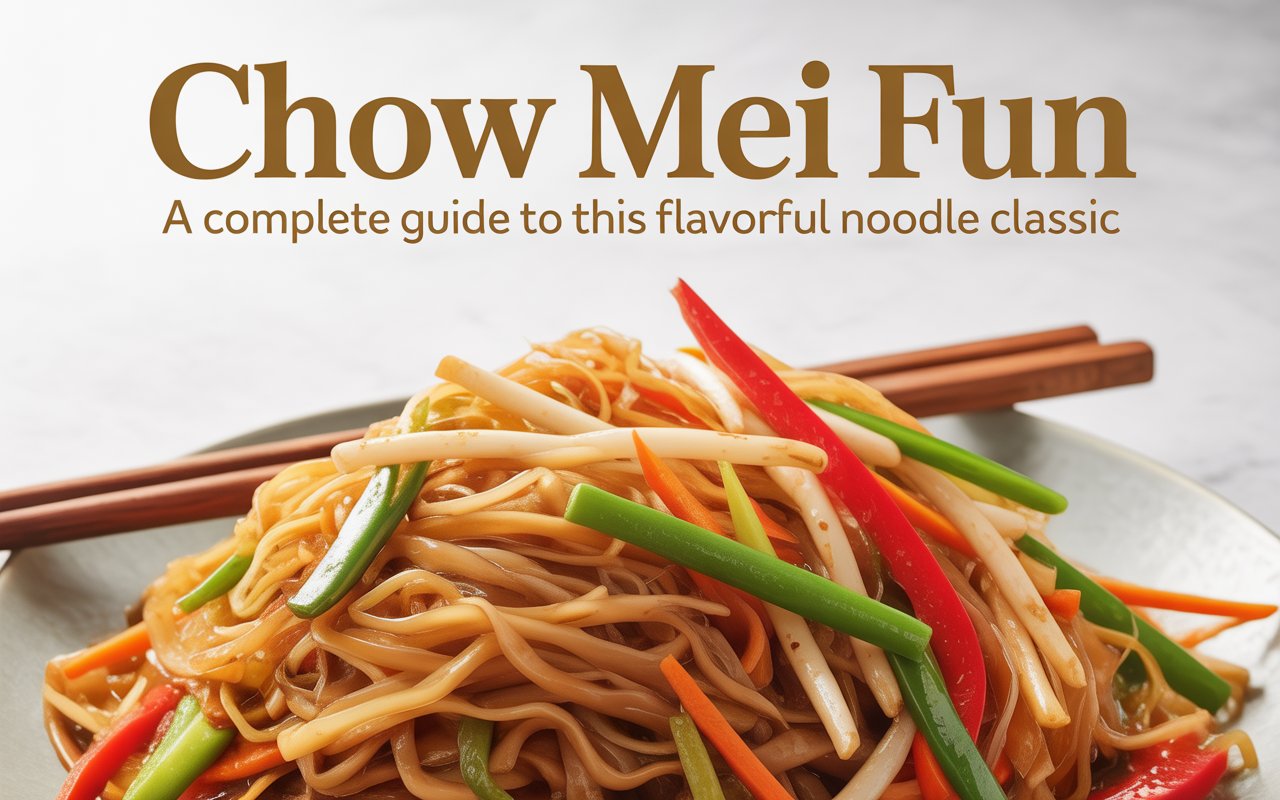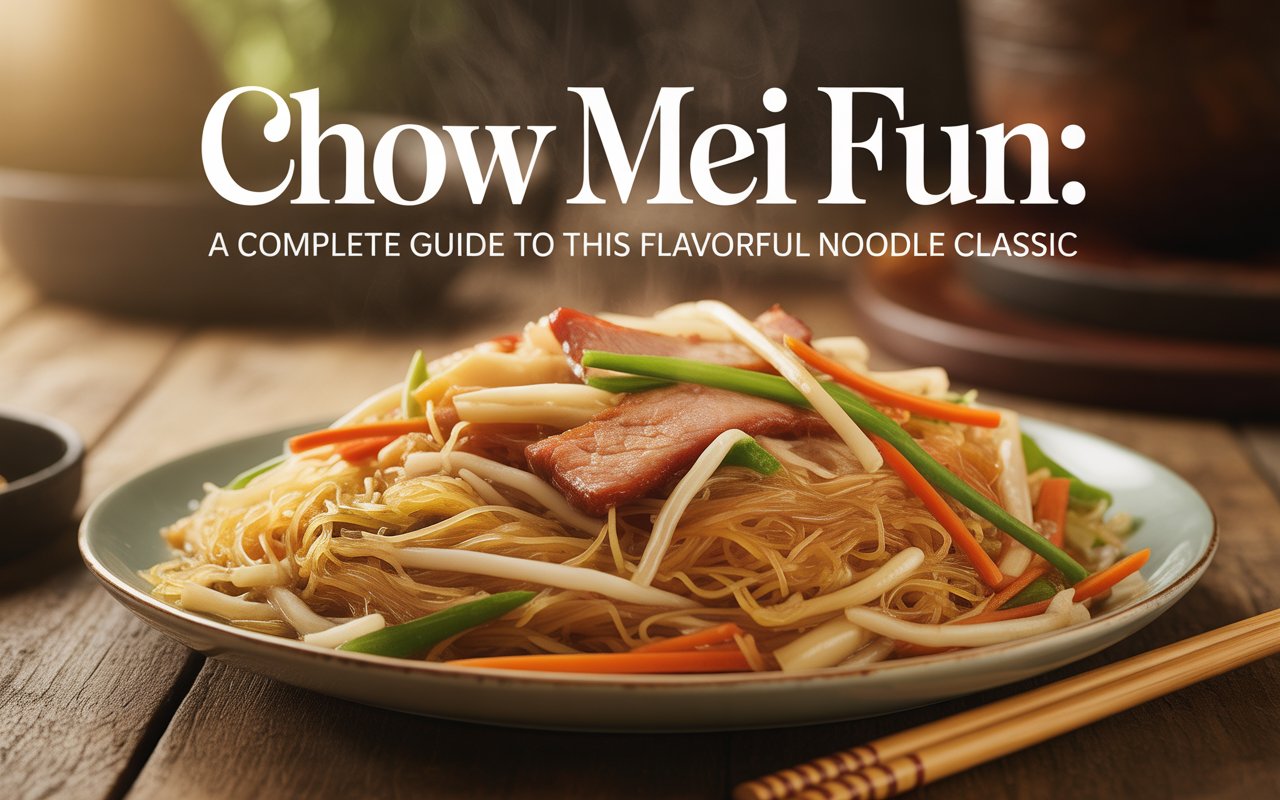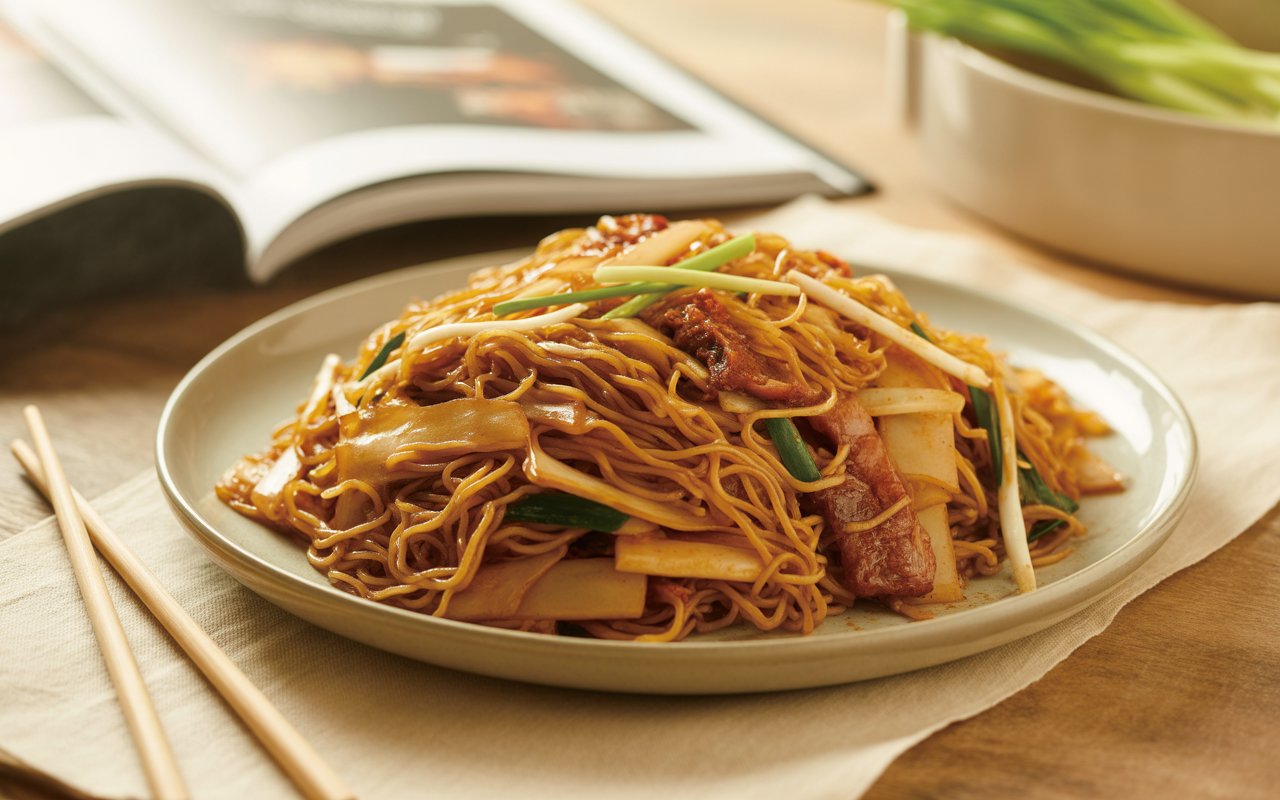When you think of comforting takeout dishes, what comes to mind? For many, it’s a warm, aromatic plate of Chow Mei Fun — those delicate rice noodles tossed with crisp vegetables, tender meats, and savory sauces. It’s light yet satisfying, simple yet deeply flavorful. But what exactly makes this dish so beloved across kitchens and restaurants worldwide?
In this comprehensive guide, we’ll dive deep into everything about Chow Mei Fun — from its origins and ingredients, to cooking methods, regional variations, and tips for making it at home like a pro. Whether you’re a curious foodie or a home cook looking to expand your repertoire, this article will give you everything you need to truly appreciate this iconic dish.
Understanding Chow Mei Fun
What Exactly Is Chow Mei Fun?
At its core, Chow Mei Fun refers to a dish made with thin rice vermicelli noodles stir-fried with a mix of ingredients. The noodles are soft yet springy, absorbing all the flavors they’re cooked with. Unlike wheat noodles, rice vermicelli is naturally gluten-free, making this dish a popular choice for those with dietary preferences.
The term “Mei Fun” refers to rice noodles, while “Chow” means stir-fry. So essentially, the name translates to “stir-fried rice noodles.”
A Peek Into Its Cultural Roots
Chow Mei Fun has its culinary origins in Southern China, particularly in Cantonese cuisine. Over time, it traveled across Asia, then globally through migration, restaurants, and trade. Today, you can find versions of Chow Mei Fun in Singapore, Malaysia, Vietnam, and even in Western takeout menus, each region adapting it to their unique palate.
The Star of the Dish: Rice Vermicelli Noodles
What Makes Rice Vermicelli Special
Unlike regular noodles, rice vermicelli is made from rice flour and water, sometimes with a hint of tapioca for extra elasticity. They’re thin, almost thread-like, but surprisingly strong — able to withstand tossing in a hot wok without breaking apart.
These noodles cook very quickly, usually by soaking in hot water rather than boiling. That’s why timing and preparation are crucial when making this dish.
Choosing the Right Noodles
Not all rice noodles are created equal. Look for Mei Fun labeled as “thin rice vermicelli.” Avoid thicker varieties used for dishes like Pad Thai — they’ll change the texture completely. Authentic noodles are usually sold dried in bundles and become soft and pliable after soaking.
Essential Ingredients That Bring Chow Mei Fun to Life

Protein Options: From Classic to Creative
Traditionally, shrimp, pork, chicken, or beef are the go-to choices. However, modern variations often include tofu, eggs, or plant-based substitutes, making it easy to adapt to any dietary preference.
-
Shrimp adds a naturally sweet flavor that pairs well with light sauces.
-
Chicken is lean and tender, perfect for soaking up seasonings.
-
Tofu works beautifully for a vegetarian option, offering a delicate texture.
Vegetables: Adding Color and Crunch
Crisp, fresh vegetables give Chow Mei Fun its signature texture contrast. Common additions include:
-
Shredded cabbage for mild sweetness
-
Julienned carrots for crunch and color
-
Bean sprouts for freshness
-
Bell peppers, onions, and scallions for aroma and bite
Think of the vegetables as the paint palette that brings this dish to life.
Seasonings and Sauces
A flavorful sauce mix is the backbone of Chow Mei Fun. While recipes vary, common elements include:
-
Soy sauce for umami depth
-
Oyster sauce for savory richness
-
Sesame oil for nutty aroma
-
Garlic and ginger for fragrance
-
A hint of white pepper for gentle heat
Some regional styles also add curry powder, giving the noodles a golden hue and warm spice profile.
Cooking Techniques: The Art of the Wok
Why High Heat Matters
The secret to an authentic Chow Mei Fun lies in the high-heat stir-fry method. A carbon steel wok is ideal because it heats quickly and evenly, allowing ingredients to sear rather than steam. This quick cooking preserves textures and locks in flavors.
Imagine the wok as a stage and every ingredient as a performer — they each get their moment under the spotlight, and the timing determines the final harmony.
Step-by-Step Method
-
Prep Everything First
Since the cooking happens fast, all ingredients — noodles, protein, vegetables, and sauces — must be ready beforehand. -
Cook the Protein
Stir-fry the chosen meat or tofu until just cooked. Remove and set aside. -
Sauté Aromatics
Quickly fry garlic, ginger, and onions to release their aroma. -
Add Vegetables
Toss in vegetables and cook briefly to retain their crunch. -
Incorporate Noodles
Gently separate and add soaked rice vermicelli. Use chopsticks or tongs to avoid breaking them. -
Season and Combine
Pour in sauce mixture, toss quickly, and reintroduce the protein. Stir-fry until everything is evenly coated. -
Finish and Serve
A final drizzle of sesame oil or garnish with scallions can elevate the aroma just before serving.
Popular Variations Around the World
Singapore-Style Chow Mei Fun
Despite the name, this variation doesn’t originate from Singapore, but rather from Cantonese chefs overseas. It features yellow curry powder, giving the noodles a bright color and a mild spicy kick. Shrimp, barbecued pork, and eggs are commonly used.
Vegetarian and Vegan Versions
By swapping out oyster sauce for mushroom-based sauce, and using tofu or tempeh, you can easily create a plant-friendly version that’s equally satisfying.
American-Chinese Takeout Style
This version often includes soy-heavy sauces, a mix of meats (sometimes called “House Special”), and larger portions. It’s more about comfort than authenticity, but undeniably delicious.
Street Food Variants in Asia
In parts of Southeast Asia, Chow Mei Fun is sold at street stalls, often wrapped in banana leaves or newspaper, giving it a unique smoky aroma. Vendors customize spice levels on the spot.
Nutritional Insights: A Light Yet Filling Dish

Chow Mei Fun is often perceived as lighter than other noodle dishes because rice vermicelli is less dense than wheat noodles. Depending on the ingredients and sauces, it can be:
-
Low in fat, especially if stir-fried with minimal oil
-
High in fiber from vegetables
-
Gluten-free, making it suitable for certain diets
-
A balanced combination of carbohydrates, protein, and micronutrients
Of course, the nutrition profile changes with portion size and sauces — homemade versions give you more control.
Tips and Tricks for Perfect Chow Mei Fun at Home
Soak, Don’t Boil
One of the most common mistakes is overcooking the noodles. Hot water soaking (not boiling) for 5–7 minutes keeps them springy and prevents breakage.
Avoid Overcrowding the Pan
Stir-frying too much at once lowers the wok temperature, causing steaming rather than frying. Cook in batches if needed.
Use Chopsticks or Tongs for Gentle Tossing
This prevents noodles from clumping or tearing during the stir-fry.
Adjust Sauce Gradually
Since rice noodles absorb liquid quickly, add sauce a bit at a time to prevent sogginess.
Chow Mei Fun in Modern Food Culture

In recent years, Chow Mei Fun has become a canvas for fusion cooking. Chefs are experimenting with:
-
Kimchi-infused versions blending Korean and Chinese flavors
-
Truffle oil drizzles for upscale twists
-
Plant-based meats for eco-conscious diners
-
Even deconstructed versions served in fine dining restaurants
Its adaptability and simplicity make it a dish that evolves with every culture it touches.
Conclusion
Chow Mei Fun is more than just another noodle dish. It’s a culinary story that weaves together history, flavor, technique, and cultural exchange. From bustling Cantonese kitchens to Western takeout menus and home kitchens worldwide, these delicate rice noodles continue to bring people together over shared meals.
So, the next time you pick up your chopsticks or frying pan, think of Chow Mei Fun not just as food, but as a bridge between traditions — light, flavorful, and endlessly versatile.
FAQs About Chow Mei Fun
1. What’s the difference between Chow Mei Fun and Lo Mein?
The main difference lies in the noodles. Chow Mei Fun uses thin rice vermicelli, while Lo Mein uses thicker wheat-based egg noodles. The cooking style and textures also vary accordingly.
2. Can I make Chow Mei Fun without a wok?
Yes! A large, heavy-bottomed skillet works well. The key is maintaining high heat and cooking quickly to replicate wok-style stir-frying.
3. How can I keep rice noodles from sticking together?
After soaking, rinse the noodles with cold water and toss them with a few drops of oil. Stir frequently while cooking to keep them separated.
4. Is Chow Mei Fun spicy?
Not necessarily. Traditional versions are mild, but Singapore-style or regional adaptations may add curry or chili for heat. You can easily control the spice level.
5. Can I prepare Chow Mei Fun ahead of time?
You can pre-soak noodles and prep ingredients in advance, but it’s best to stir-fry just before serving to maintain texture and freshness.



